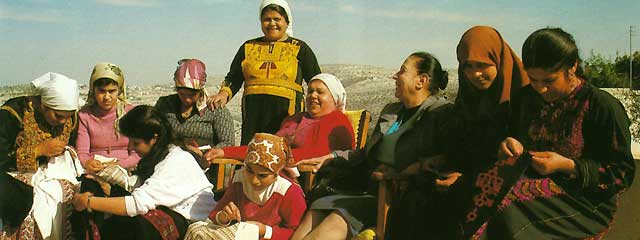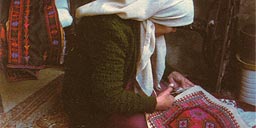Although cross-stitch embroidery has been in decline in recent decades, Palestinian women have continued to embroider. Older women embroider because it's part of their life. Younger women embroider for women's cooperatives which were set up to preserve embroidery traditions and provide rural and refugee women with an income.
Embroidery styles changed, however, reflecting a blending together of varied traditions. Colors and patterns which, for centuries, were tied to regions - even specific villages - became mixed together. Embroidery survived, but it was transformed from a village handicraft into an artistic expression of Palestinian identity.
With contemporary Palestinian women preferring the "jilbab", an unadorned long dress, to the traditional embroidered thoub, Palestinian embroidery today finds different expression: in modern apparel, such as shawls, and in house decoration. Embroidered pillows, tablecloths, wall hangings and other home decorations - sold through Palestinian women's cooperatives - today are very popular.
|
Echoing the words of a young woman at a UNRWA embroidery cooperative in Gaza:
« We no longer embroider as our grandmothers did. That's true. Instead, we embroider for our homes - and for work... But no one can stop it. Embroidery is our heritage. We love it... and we are proud of it. »
|


